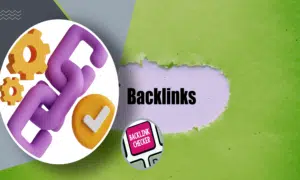How to Improve Your Blog’s Content for Search Engines

Blogging is more difficult than just creating engaging content search engine optimization, or SEO is more important than ever in the present digital era for driving traffic to your website and raising its visibility. Thus, what guarantees can you have that search engines will find the content on your blog? Do not fret! This article will disclose some trade-secret techniques for search engine optimization of your blog’s written content. By concentrating on your blog’s content, backlinks, keywords, and user experience, you may raise its online visibility. Now let’s simply get started!
Quality Content
When it comes to improving your blog’s content for search engines, quality is king. Gone are the days of keyword stuffing and shallow posts. Search engines, like Google, have become smarter in recognizing high-quality content that provides value to readers.
But what exactly makes a blog post “high-quality”? It starts with relevance and accuracy.
Your writing ought to speak to a particular issue or subject that people are looking for from you. Make sure your knowledge is accurate and up to date by doing extensive research on the topic.
Next, concentrate on producing interesting and well-written material. A compelling introduction will hook readers from the start, while clear headings and subheadings will help them navigate through your post effortlessly.
Keywords
Keywords are an essential part of optimizing your blog content for search engines. These are the words or phrases that users enter into search engines when looking for information. Including relevant keywords in your blog posts helps search engines understand what your content is about and rank it accordingly.
But simply stuffing your blog with keywords won’t do the trick. You need to use them strategically and thoughtfully throughout your content. Start by conducting keyword research to identify popular and relevant terms related to your topic. This will help you understand what people are searching for and allow you to target those specific keywords in your writing.
Once you have identified the right keywords, incorporate them naturally into your blog posts. Don’t force them where they don’t fit, as this can make your content sound robotic and unnatural. Instead, focus on using them in headings, subheadings, introductory paragraphs, and sprinkling throughout the body of the text.
Backlinks
Backlinks play a crucial role in improving your blog’s visibility and search engine rankings. These are links from other websites that point back to your own site. Think of them as “votes” for the credibility and authority of your content.
Building high-quality inbound connections takes time and effort, but the results are well worth it. You can get backlinks by contacting blogs and websites in your niche and offering to contribute as a guest author or work with them on a joint project. Exposure aside, this also helps to cement your status as a credible authority in your subject.
Another effective method is through creating shareable content that naturally attracts backlinks from others who find value in what you have to offer. This could be informative articles, infographics, videos, or even interactive tools.
It’s important to note that not all backlinks are equal; quality matters over quantity. Search engines consider the relevance and authority of the linking site when determining its impact on your rankings. Aim for reputable websites with high domain authority to maximize the benefits.

Research Your Topic
One of the most crucial aspects of producing blog material that is search engine friendly is doing extensive research on your subject. This not only improves your comprehension of the topic matter but also makes it possible for you to give your readers useful and pertinent information.
Start by generating concepts and topic-related keywords. Use tools like Google Trends or keyword research tools to identify popular search terms and phrases associated with your niche. This will help you tailor your content around these keywords, improving its visibility in search engine results.
Once you have a list of keywords, dive deeper into each topic by conducting comprehensive research. Explore various credible sources such as industry publications, academic journals, reputable websites, and expert opinions within the field. Take notes on key points, statistics, and any unique insights that can enhance the quality of your blog post.
Remember that originality is crucial here; avoid regurgitating information already available online. Instead, strive to offer fresh perspectives or unique angles on the topic at hand.
Optimize Your Article
Optimizing your article is crucial if you want to improve its visibility in search engine results. By following a few simple steps, you can ensure that your content is well-optimized and has a better chance of ranking higher.
Make sure to include relevant keywords throughout your article. These are the words or phrases that people are most likely to use when searching for information related to your topic. Including them strategically in your headings, subheadings, and body text can help search engines understand what your article is about.
Pay attention to the structure of your article. Use headings and subheadings to break up the content into logical sections. This not only makes it easier for readers to navigate through your article but also helps search engines understand the organization of your content.
Additionally, don’t forget about meta tags and meta descriptions. These snippets of information provide a concise summary of what readers can expect from clicking on your link in search results. Craft compelling meta tags and descriptions that accurately reflect the content of your article.
Another important aspect of optimizing your article is including both internal and external links within the text. Internal links help guide readers to other relevant pages on your blog or website while external links demonstrate credibility by referencing reputable sources.
Optimize images by using descriptive file names, alt tags, and captions that incorporate relevant keywords. This not only improves accessibility for visually impaired users but also helps search engines index the images properly.
By implementing these optimization strategies into each article you publish on your blog, you’ll be taking significant steps towards improving its visibility in search engine rankings!
Use Images and Videos
Adding visuals like photos and videos to your blog entries is a great strategy to boost their search engine rankings. The addition of images to your articles not only improves their readability but also their search engine optimization.
Including relevant images throughout your blog post can enhance the user experience and encourage visitors to stay on your page longer. Make sure that the images are of high quality, properly optimized with alt tags, and related to the topic at hand. This will not only make your content visually engaging but also improve its discoverability in image searches.
Videos are another powerful tool for enhancing your blog’s SEO. Embedding videos from popular platforms like YouTube or Vimeo can increase dwell time on your website, as people tend to spend more time watching videos than reading text alone. Additionally, creating original video content allows you to target specific keywords and attract a wider audience.
Remember that while including visual elements is important, it should be done strategically without overwhelming or distracting from the written content. Use images and videos sparingly but effectively to support and supplement the information you’re providing in your blog post.
Incorporating well-optimized images and relevant videos into your blog posts can greatly enhance their appeal both to readers and search engines alike. By utilizing visual content wisely, you’ll not only improve the user experience but also boost SEO rankings for better visibility online.
Give Readers What They Want
Providing material that your viewers actually want to read is a great way to boost your blog’s visibility in search engines. Remember that your readers are the sole purpose of your work. How then can you guarantee that you are giving them precisely what it is that they want?
Knowing your intended audience and their wants and interests should be your top priority. Carefully examine their profile, including demographics, interests, and problems. This will allow you to produce something that truly speaks to them.
Focus on answering their queries and solving their difficulties once you have a firm grasp on who you’re writing for. Make sure the information in your blog entries is relevant and applicable to the lives of your readers.
It’s not enough to merely address their concerns; you must also provide the information in a way that piques their curiosity and facilitates their comprehension. Use plain language instead of jargon or technical terms whenever possible. Break down complex concepts into digestible chunks so that even beginners can grasp the main ideas easily.
Conclusion
If you want your blog to expand in popularity and readership—and thereby your online profile and influence—you must optimize its content for search engines. Following the advice in this piece will make your blog entries more accessible to readers and search engines alike. Keep in mind that producing high-quality content should always be your top priority.
First, you should do some keyword research to determine which terms are most applicable to your blog’s topic and audience. Incorporate these keywords naturally throughout your post to improve its chances of ranking higher in search engine results. Backlinks are another essential element for enhancing SEO. Seek opportunities to build high-quality backlinks from reputable websites within your industry. This not only helps drive traffic but also signals search engines that others value and trust your content.
Thoroughly researching your topic will ensure that you provide accurate information and valuable insights to readers. Keep up with the latest trends, statistics, and studies related to your niche so you can deliver fresh and compelling content consistently.
Optimizing each article includes optimizing meta tags, headings, URL structure, alt text for images, etc., making it easier for search engine bots to understand what your post is about.
Visual elements such as images and videos not only enhance user experience but also boost SEO rankings by increasing engagement on a page. Utilize relevant visuals that support or illustrate key points within the text.
Giving readers what they want is paramount when improving blog content for search engines. Understanding their needs and interests enables you to create tailored articles that resonate with them on a deeper level.


 Bill Yeager, Co-Owner of High Point SEO & Marketing in CT
Bill Yeager, Co-Owner of High Point SEO & Marketing in CT